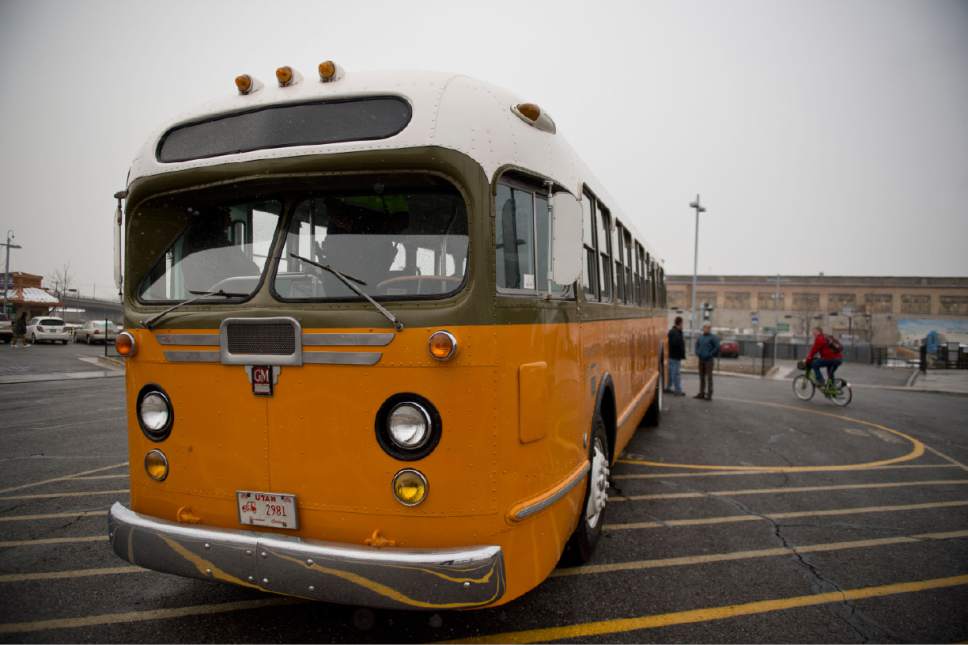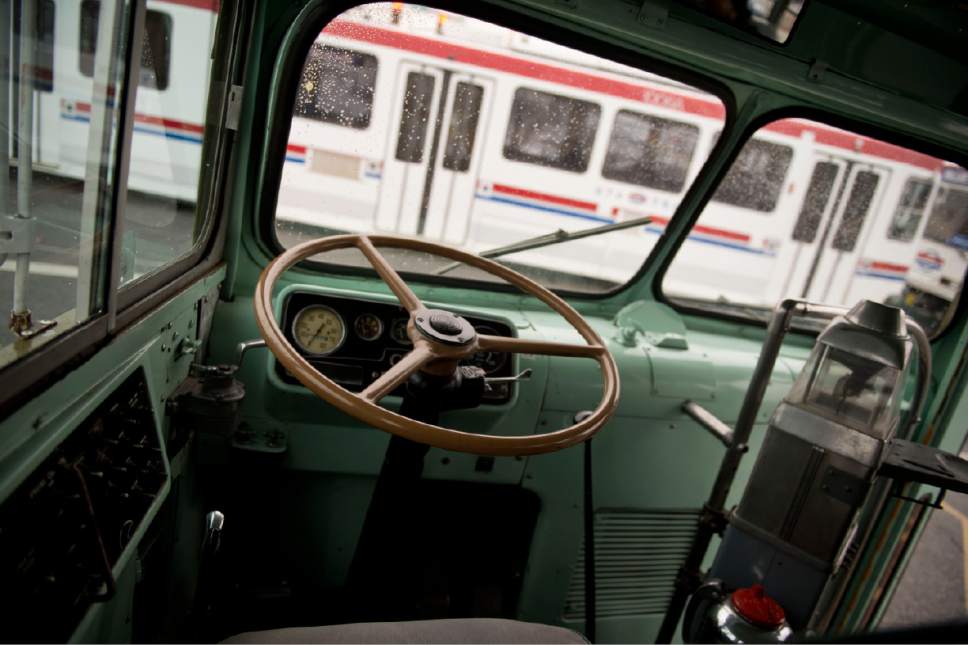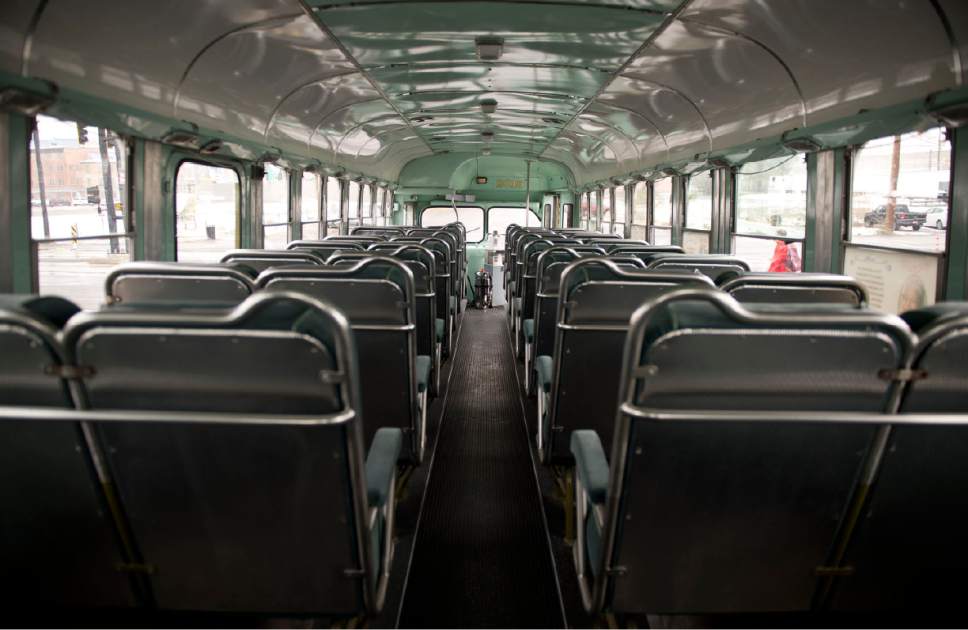This is an archived article that was published on sltrib.com in 2016, and information in the article may be outdated. It is provided only for personal research purposes and may not be reprinted.
Most Utah Transit Authority buses carry riders to work, shopping or school. But one seeks to transport people back in time to the beginning of the U.S. civil-rights movement.
UTA displayed a 1954 General Motors bus Thursday that its workers restored years ago. It is a similar model, with the same color scheme, as the segregated bus in Montgomery, Ala., where Rosa Parks was arrested for refusing to give up her seat to a white passenger exactly 61 years ago.
"We're commemorating what a courageous rider she was and what she had to endure," said Kenya Fail, UTA manager of civil-rights compliance. The existence of such an office at a transit agency shows how far America has traveled down the civil-rights road.
Fail noted that Parks "wasn't the first woman who refused to move. But because she was seen as a leader in the community and served as the NAACP secretary, they felt like that was the time for Martin Luther King to get behind her."
Parks and King helped spark an 11-month boycott of the Montgomery bus system, a seminal event that drew attention to King and civil rights — and made Park, an unknown seamstress, an icon to that movement. She died in 2005 at age 92.
On the anniversary of Parks' stand, UTA parked its restored bus at its Salt Lake Central Station for TRAX and FrontRunner, with numerous posters telling her story.
That particular vehicle started its life as a Greyhound bus. The old Salt Lake City Lines bought it in 1961. It served as a UTA bus when that agency formed and was retired in the 1970s.
"In the 1980s, a group of employees, out of a sense of pride, decided to restore it on their own time and at their own expense," said UTA spokesman Remi Barron.
All have since retired from the agency, but they etched their names inside the valve cover of the bus's diesel engine.
"It's occasionally used in parades, historical events," Barron said. "It's a source of historical pride for UTA and its employees. We keep it clean, well maintained and relicensed."
UTA used it this week to draw attention to its efforts to attract diversity among its employees, and to protect its minority riders from discrimination or poor treatment.
"My office is responsible to handle comments, complaints or concerns that come in," Fail said.
She noted that UTA is meeting goals for diversity among employees. Of its 1,000 operators, she said, 22 percent are minorities and another 22 percent are female. Many of the recent hires are refugees.
"They have an important position," Fail said. "They are the face of UTA."
She added that the agency is reaching out to minority communities to encourage more to apply.
"UTA is taking strides to ensure everyone is served," Fail said, regardless of race, ethnicity or economic background.



















